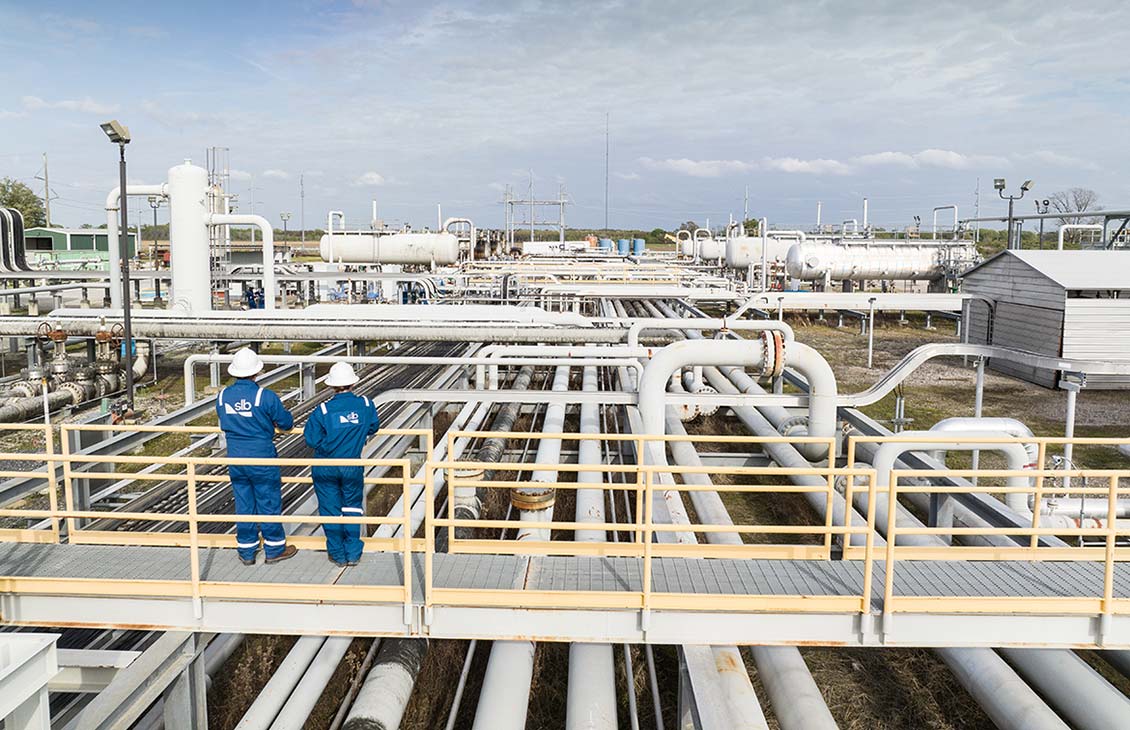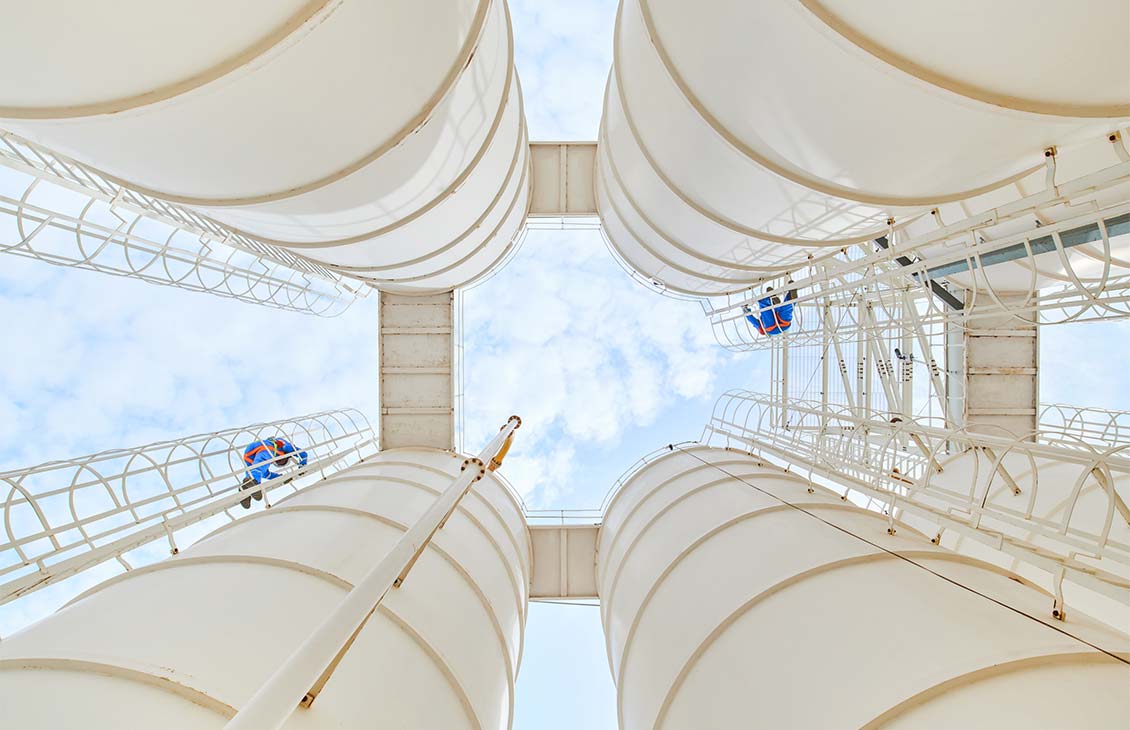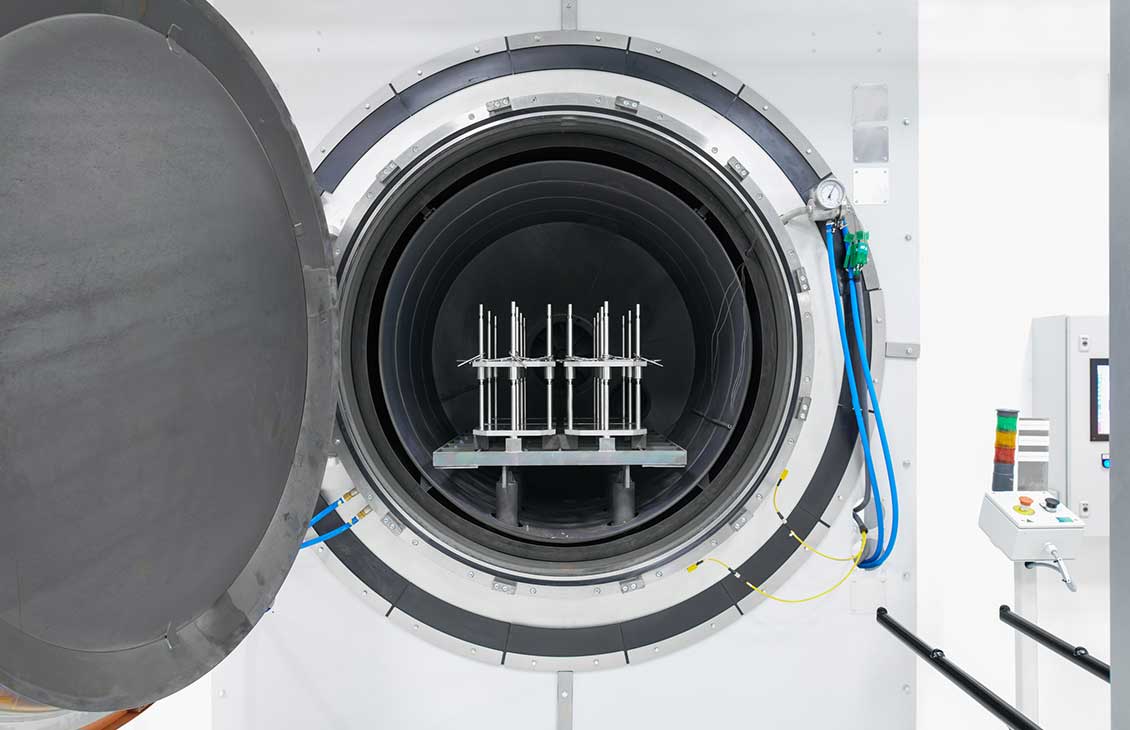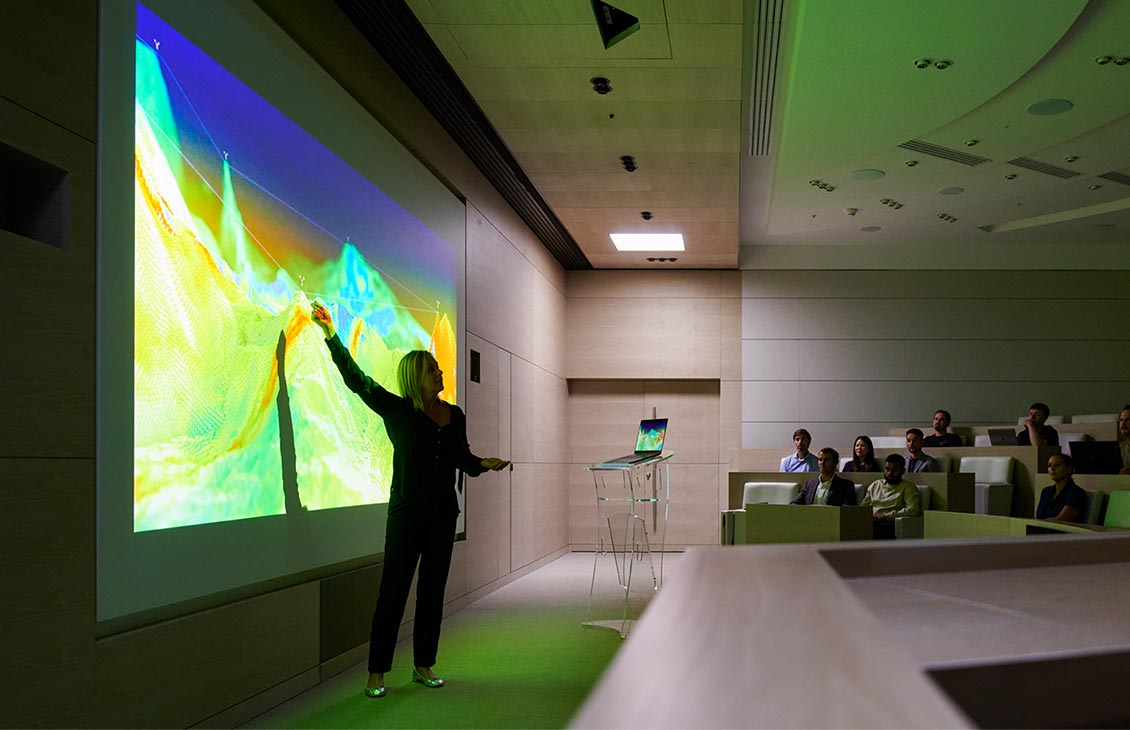How SLB is driving down gigatons of carbon emissions
Published: 04/28/2023

How SLB is driving down gigatons of carbon emissions
Published: 04/28/2023

Quick navigation:
- Our decarbonization commitment
- Decarbonizing oil and gas systems
- Decarbonizing industry
- Innovating toward a decarbonized future
- Leveraging digital
Introduction
Our world is energy hungry and reliant on fossil fuels, which make up roughly 80 percent of global energy use.
In 2022, energy-related emissions were 36.8 gigatons of CO2 per year, according to the International Energy Agency (IEA). These emissions—plus those from other human-made greenhouse gasses (GHGs)—exceed the natural absorption abilities of our planet, having a compounding effect on CO2 buildup in our atmosphere.
Ultimately, rising GHG levels are not good for our planet and pose an existential threat to humanity, but so too does a lack of access to reliable and affordable energy. Today, this is largely supplied by fossil fuels, which represent a critically important and life-sustaining resource to billions of people for everything from machine labor for agriculture to modern medicine and much more.
The question is how can the energy industry balance providing access to reliable and affordable energy (e.g., fossil fuels or their equivalent)—while at the same time decarbonizing the planet to mitigate the impacts of climate change?
At SLB, we are working across industries and sectors to provide an answer to this question in the form of technology-driven solutions. Through these solutions, we aim to shift the trajectory of carbon emissions downward while innovating toward a less fossil-fuel-reliant and decarbonized future.
Our decarbonization commitment
In 2019, we became the first company in oil and gas exploration and production (E&P) services to commit to a science-based target in emissions reduction, and in 2021, we announced our commitment to achieve net-zero emissions by 2050, which we’ve aligned to GHG reduction targets.
For businesses and organizations, GHGs are divided into three categories: Scope 1, 2 and 3.
Our commitment includes interim target goals through 2050 for reducing our Scope 1, 2 and 3 emissions. In many cases, our Scope 3 emissions also correspond to a portion of our customers’ Scope 1, 2 or 3 emissions, which we are addressing through a variety of offerings.
See our progress: SLB 2022 Sustainability Report
Decarbonizing oil and gas systems
In every realistic scenario, oil and gas will be a crucial part of the energy mix for decades to come. Because of this, part of our decarbonization focus is on helping the oil and gas E&P industry more sustainably find and produce it.
In 2021, we began offering technologies with a quantifiable emissions reduction benefit called Transition Technologies™. This portfolio of technologies and services helps reduce our customers’ operational emissions across their Scope 1, 2 and 3, while driving us toward our Scope 3 reduction targets. Last year, our Transition Technologies saved more than 700,000 tons of carbon dioxide equivalent (CO2e) for our customers' operations. Today, we are actively developing and deploying these technologies and services to continue having a measurable impact on reducing the emissions intensity of the E&P industry.
We also have a dedicated business that focuses on measuring, monitoring and ultimately eliminating methane from energy industry operations called SLB End-to-end Emissions Solutions (SEES). Methane elimination is critically important because methane has 84 times the warming potential of CO2 over a period of twenty years. Oil and gas operations globally emit close to 80 million tons of methane per year, producing the same climate impact as the annual CO2 emissions from the entire continent of Europe. Thus, curbing methane’s impact from oil and gas development is extremely important to mitigate near-term climate rise.
Related: SLB Supports Industry Effort to Eliminate Methane Emissions from Oil and Gas Operations

Going beyond oil and gas
To make an even greater impact on reducing the gigatons of CO2 affecting our world, we’re going beyond the decarbonization of oil and gas E&P systems. Today, we’re aligning with other so called ‘hard-to-abate’ industries like steel, cement and power generation to identify their unique decarbonization challenges—and to ultimately deliver the technology solutions that will solve them.
Further still, we are working to deliver decarbonization solutions and cleantech that will power the clean energy ecosystems of tomorrow. Today, we’re doing this through our New Energy business, focusing on five sectors:
- Carbon capture, sequestration (CCUS)
- Geothermal and Geoenergy
- Low-carbon hydrogen
- Stationary energy storage
- Critical minerals, such as sustainable lithium production.
We chose to focus on these sectors because we see great sustainability and decarbonization impact potential in each.
Through creating cross-industry collaborations and partnerships and leveraging our strengths in complex process engineering, large-scale technology development and project management, and expertise in both the subsurface and surface domains, we believe we can play a crucial role in shifting the economics of these new energy sectors in a positive direction and have an emissions reduction impact on the scale of gigatons.
Decarbonizing industry
Because fossil fuels will be needed by many industries for many years, all scenarios are increasingly pivoting toward CCUS as a critical lever to close the emissions gap between desired and actual cumulative CO2 emissions.
Hard-to-abate industries like steel and cement, for instance, are reliant on fossil fuels because they require high-heat processes—up to 3,000 degF (1,650 degC)—to generate their products. Today, there’s simply not a viable economic alternative to fossil fuels for industrial heat.
In the current CCUS landscape, about 40 million tons of CO2 are captured and sequestered per year. To meet net-zero ambitions, however, this number will need to rise to many gigatons per year—and fast.
Rapidly scaling up CCUS will require innovative business models and partnerships across sectors, from emitters all the way to pore space owners.
We are currently involved in dozens of CCUS projects globally, providing storage site subsurface characterization and development plans, CO2 flow assurance, injectivity derisking and CO2 containment monitoring. Building on these core strengths, we are leveraging new partnerships across the entire value chain, from CO2 emissions to sequestration, through business models that align incentives across parties, presenting great opportunities to accelerate decarbonization at scale.
Bringing down CCUS costs
Today, capture costs make up between 50–70 percent of the costs of CCUS projects. New technologies that reduce these costs will be crucial to the speed of CCUS growth.
We recently announced a collaboration with RTI International to accelerate the industrialization and scale-up of their proprietary non-aqueous solvent (NAS) technology. This tech uses as much as 40 percent less energy during the CO2 capture process, which has the potential to significantly reduce the operating costs of CCUS projects.
In addition to NAS tech, we are actively exploring other technologies that can bring CCUS project costs down.

Innovating toward a decarbonized future
Thinking beyond offset emissions with CCUS, clean energy production from low-carbon hydrogen stands to have a significant impact on industrial decarbonization.
Hydrogen can be used as a replacement for fossils fuels in several use cases, including industrial heat.
There are various ways to produce low-carbon hydrogen. One method is to use renewable energy and electrolysis. Unlike other forms of hydrogen, this method reduces the need to offset emissions with carbon capture. The problem is its currently expensive to produce. Incentives will help lower these costs, but more technology innovation is needed to help shift the economics in the right direction.
One way to reduce the costs of low-carbon hydrogen is to increase the production efficiency while reducing the energy required to produce it. Through Genvia, an SLB clean hydrogen production technology joint venture with The French Alternative Energies and Atomic Energy Commission or CEA and other partners, we are working on a solid oxide electrolyzer technology that can reduce the energy intensity of low-carbon hydrogen production for specific use cases in hard-abate-industries like steel.
Based on early estimates, the technology has the potential to reduce energy requirements for hydrogen production by up to 30 percent.
In addition to hydrogen, critical minerals like lithium will be extremely important to the low-carbon economy of the future, especially with the move to electrification. Producing these minerals, however, is very often an emissions- and resource-intensive process.
In the U.S., we are currently mobilizing equipment for a technology solution that sustainably produces lithium from brine at our pilot plant in Clayton Valley, Nevada. When compared with current lithium production practices from brine, our pilot project is expected to use just 15 percent of the water and seven percent of the land while reducing emissions by up to 80 percent.

Seeding cleantech growth
To accelerate promising and bleeding-edge tech solutions in our new energy focus sectors, we have a corporate venture capital (CVC) organization that invests in and partners with early-stage technology ventures to scale-up technology development.
The start-ups that make up our CVC portfolio have access to SLB’s multidisciplinary expert community, industrialization capacity and global footprint to accelerate their market introduction and scalability. Some of these start-ups include Gradiant, a global water solutions provider that plays a role in our sustainable lithium production solution, and Enervenue, a short- and long-duration energy storage technology start up that uses nickel hydrogen instead of lithium-ion phosphate.
Leveraging digital
Underlying so much of what we do in decarbonization today is digital.
Digital plays a key role as both a performance and efficiency enabler, and today, the role of digital in our business is firmly intertwined with sustainability. Here are a couple of examples how:
- In 2022, we announced plans to collaborate with Aramco on the development of a digital platform that will provide sustainability solutions for hard-to-abate industrial sectors. The platform will enable customers to measure and report baselines, targets, emissions, offsets and credits, which will help them manage their carbon footprints more effectively.
- In our methane business, we have a digital platform that can enable business-critical compliance and reporting needs while also optimizing oil and gas operations to increase efficiency and performance.
In our oil and gas business, digital underpins many of our Transition Technologies today, and it is being baked into our decarbonization and cleantech solutions. What it enables for our company and for our customers is rapid scaling-up of both operational efficiencies and CO2 reduction or elimination.
Related: Olivier Le Peuch on digital’s role in the low carbon energy future

Conclusion
Energy, and all forms of it, is essential to everything we do in the modern world. Reliable and affordable energy is life enabling and life sustaining. Therefore, we believe decarbonization comes with a key responsibility to help provide people with access to this energy.
Our decarbonization journey started in oil and gas E&P—but we’re not stopping there.
To make the gigatons of impact that we believe—and science confirms—are necessary to mitigate the impacts of climate change, we will help bring decarbonization solutions to other industries. We will do this through innovation to accelerate the technology-driven solutions the world needs to sustain modern life and a livable planet.
In the face of climate change and some of the most pressing energy security challenges in a generation, we will not be the onlookers sitting on the sidelines. We will be the problem solvers. We will be a part of the solution.
